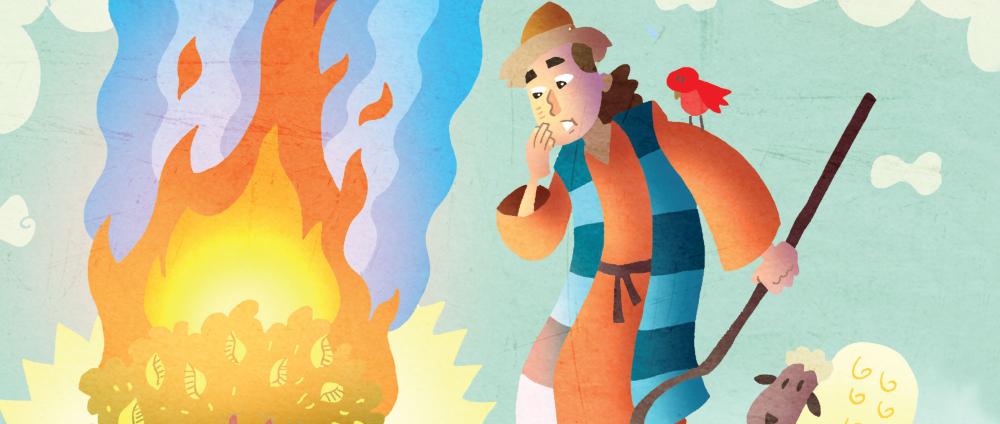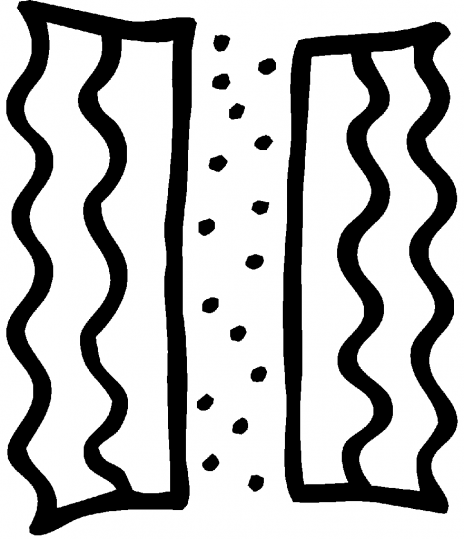
The Exodus
- Describe God's promise to the people when they left Egypt.
- Tell what the story shows about God.
- Praise our mighty and powerful God.
Leader Reflection
The Bible includes two primary salvation stories, and they're deeply related to each other. The story of the exodus is the Old Testament salvation story, and, of course, the story of the death and resurrection of Jesus is the New Testament salvation story. Just a hint of how they're related—when Jesus is transfigured on the mountain with Moses and Elijah in Luke 9, the disciples discuss with Jesus his coming "departure" (Greek exodus) in Jerusalem (Luke 9:30).
The story has been building to this decisive moment through eleven chapters telling of Israel's enslavement; the call of Moses; the plagues; and, finally, the deaths of Egypt's firstborn sons. The actual exodus is also saturated in ceremony and drama.
On the eve of Israel's departure, God institutes a memorial meal that will commemorate this moment of salvation for ages to come. The Passover, with its slaughtered lamb, serves the same commemorative purpose on the eve of Jesus' crucifixion.
Strangely, God does not lead the Israelites away from Egypt and toward the promised land by the most likely and natural route. Instead of heading due east, God leads them south, along the Red Sea. When Pharaoh, unsurprisingly, changes his mind and begins to chase them with his army, the Israelites recognize that they're stuck, almost literally, between the devil (Pharaoh's army) and the deep blue (Red) sea.
Realizing their apparently hopeless situation, the Israelites cry out to Moses, "Was it that there were no graves in Egypt that you brought us to the desert to die?" His back to the sea and seeing the dust of approaching chariots, Moses finds the faith for his most shining moment: "Do not be afraid. . . . The Lord will fight for you!" Then Moses raises his rod over the roiling sea, and its waters spread apart so the Israelites can pass through on dry ground.
This is a jubilant story of deliverance, but it's also gruesome. Pharaoh's armies plunge into the sea after the Israelites, the waves cascade over them, and horses and their riders drown in the writhing waters. In the morning their bodies are strewn along the shore. It is then that Miriam and the women sing: "I will sing to the Lord, for he is highly exalted. Both horse and driver he has hurled into the sea."
This Old Testament story of salvation prefigures our own salvation in Jesus Christ. We were enslaved to sin and death. Jesus came to be our Savior, but things looked hopeless when he was condemned and nailed to a cross. On Easter God opened the grave, and Christ's resurrection spells the defeat of the enslaving powers of sin and death. We too are redeemed through water—the waters of baptism—and God has now set us on our way to the ultimate promised land.
Nowhere do we experience this parallel more graphically than at the Lord's Supper. "This is my body . . . this is my blood." No lamb here, because the very Lamb of God has already been sacrificed for us, and his blood covers us and our households from the curse of sin and death. Like the Israelite children, our own children may ask, "What does this ceremony mean to you?" (12:26). Our answer: It is the new covenant Passover. The Lamb of God was sacrificed on the cross to free us from our sins and give us eternal life.
Steps
Step 1 Breathe
Use this time to focus your attention on God.
Do this with me: calm your head, heart, and hands as you slowly breathe in . . . and out. (Demonstrate a few deep "in and out breaths" with eyes closed.)

Get Unlimited Access!
Sign up for DWELL Digital to unlock all online leader resources, printable pages and session plans.
Call 800-333-8300 or Request Access
Already a subscriber? Log In
Learn About DWELL
DWELL helps kids find their place in God's Big Story. Learn more about this popular and trusted children’s ministry curriculum.
